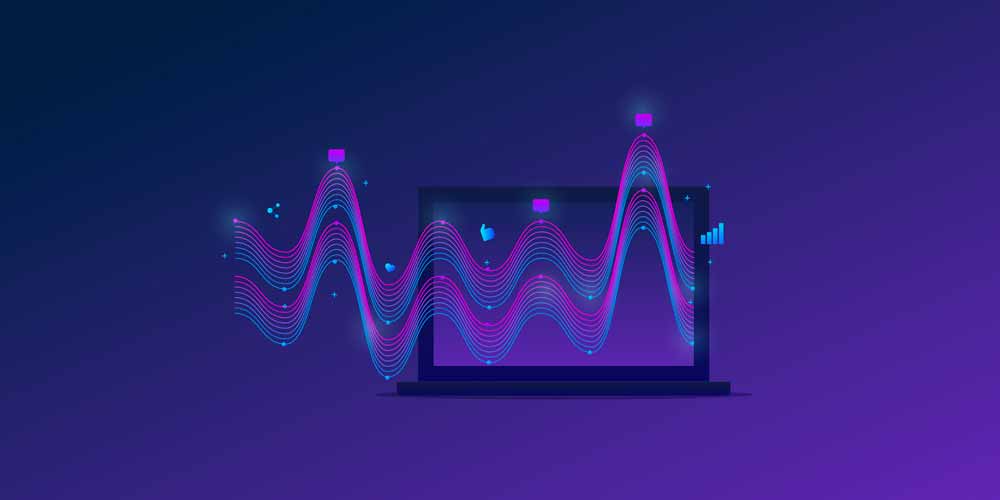Tabella dei contenuti
In May, as anticipated on the Webmaster Central Blog, the new Google algorithm will become effective. A few weeks after the Chromium developers’ notice regarding the introduction of new metrics to evaluate the user experience of web pages more accurately, Google declared that Core Web Vitals will in effect be a ranking factor taken. in consideration of the algorithm for the positioning of the sites.
The Core Web Vitals are the fundamental parameters for measuring the quality of the browsing experience by users on websites: they are related to the stability of the layout, response time and speed of a website. In short, these are criteria for understanding how a user perceives the experience on a specific web page and for measuring the usability of web pages.
Page Experience: Google’s new algorithm combines SEO and UX
It is certainly not the first time that Google has announced updates to the algorithm that take into account the User Experience, nor in which performance metrics are introduced into the search algorithm. The novelty, in this case, are the new factors with which those pages that truly offer an optimized browsing experience are evaluated and rewarded, especially from mobile.
What are the changes after the Google algorithm update in a nutshell? A new ranking factor has been introduced completely focused on the page experience: Core Web Vitals will have a greater weight in the ranking. They are in addition to the already known Search Signals, including mobile usability and therefore being mobile-friendly, browsing safety (HTTPS) and non-intrusive advertising.

Source: Google Search Central Blog
Core Web Vitals measure:
- The loading speed of the page and in particular of the main content (Largest Contentful Paint – LCP). A page that provides a good browsing experience loads the largest elements within the first 2.5 seconds (the experience, on the other hand, is negative when the loading times exceed 4 seconds);
- The ease with which users can interact with content (First Input Delay – FID). It refers, for example, to how quickly users can search or start filling out a form. The delay of the first interaction characteristic of a page with a good UX is less than 100 milliseconds, while exceeding 300 milliseconds is an unfavorable index;
- The visual stability of the content being loaded (Cumulative Layout Shift – CLS). Does the page follow all standards to avoid accidental interactions? This metric measures visual stability. It is important, for example, to avoid that the appearance of any pop-up causes the movement of the position of icons to be clicked. The ideal CLS score is less than 0.1 (it is considered negative when greater than 0.25): the amount of unexpected shift in the layout of the visual content of the page, therefore, must be almost zero.

Source: Web.dev
In addition to ensuring a good page experience and safe browsing, the optimization of Core Web Vitals helps users find the information they need faster and access the pages they are looking for more quickly.
What do we know about Google’s new algorithm
The official date on which the Google algorithm update will begin is May 2021.
Google has also clarified that the new ranking factor will act primarily at the page level and not at the overall site level. This means that pages with a poor User Experience will be penalized with consequent loss of traffic and downgrading of metrics, they will not be lifted or driven by other pages on the site capable of providing a good browsing experience.
With the new Google algorithm, then, the suitability factors with which the search engine selects the pages that are included in the News in Evidence (Top Stories) will also change: in particular, it will no longer be necessary to have AMP to appear. The pre-requisite that pages must meet Google News content policies will remain unchanged, and page experience will be introduced as a ranking criterion. In a nutshell, that of the Highlights will become a much more competitive section.
What is certain is that this update does not replace the importance of creating good content that users have the desire and pleasure to consume: high quality texts will continue to be vital, but the browsing experience will become the tip of the balance that it will suggest to Google which pages should be awarded and ranked higher in the SERP.
What does the latest Google algorithm mean
Great content and UX? We are convinced that Google is going in the right direction, giving a reward to those brands who decide to add real value to mere internet browsing. Google, with the change of algorithm, took the side of users and has broadened its horizons: it not only demands attention to content but also quantifies the efficiency and quality of the page experience, and reflects these new metrics in the way it positions search results.
This does not mean that the key points of SEO no longer have the same importance: we must continue to fix all the indexing problems and canonical tags, but the new update changes the perspective of search strategies. The goal must be to add value to the user’s browsing experience.
We must ask ourselves:
- How can we make the funnel more linear?
- What can we offer more than our competitors?
- How can we make our site more intuitive to explore and faster?
E-commerce could be the websites that will be most affected by Google’s new algorithm, since the page experience will have a strong impact on product search results. Just think of how many portals sell the same object: often the content used by each competitor is almost identical as it is provided by the manufacturer, and therefore the UX really becomes the determining factor.
Furthermore, the optimization of the page experience can contribute to business success when users are able to carry out transactions in a simpler and frictionless way: it is in fact established that there is a close correlation between an optimized User Experience and the conversion / sale rate. When it comes to page speed, for example, the Chromium developers have found that a delay of 2 seconds is enough for users to leave a new site they are trying to access for the first time. To slow down the loading, especially of e-commerce sites, may be the images, which therefore must be optimized. Images alone account for about 34% of the weight of web pages, so it’s important to be able to find a balance between file size and quality so that page load times are reduced.
How should brands respond to Google’s new algorithm?
May is upon us and it is good not to be caught unprepared and:
- Take a careful look at the overall customer journey;
- Do tests to understand what may annoy users while browsing;
- Take a peek at what competitors are doing and study how to offer something unique.
Many more teams will find themselves collaborating: those involved in search campaigns will have to work in harmony with UX experts and with customers or product owners, to create an online experience that is not interrupted by any problem.
At the same time, it is essential not to abandon the good habits cultivated to date: we must continue to produce quality content, removing the poor, too poor or outdated ones that do not add any value. This does not necessarily mean constantly writing new texts, but also updating, optimizing and improving those already present on a site.
Google puts the user at the center, are you ready to do it too? We do, so do not hesitate to contact us to study together a strategy that allows the pages of your site to arrive prepared for the entry into force of the new Google algorithm. Stay up to date and be competitive.








